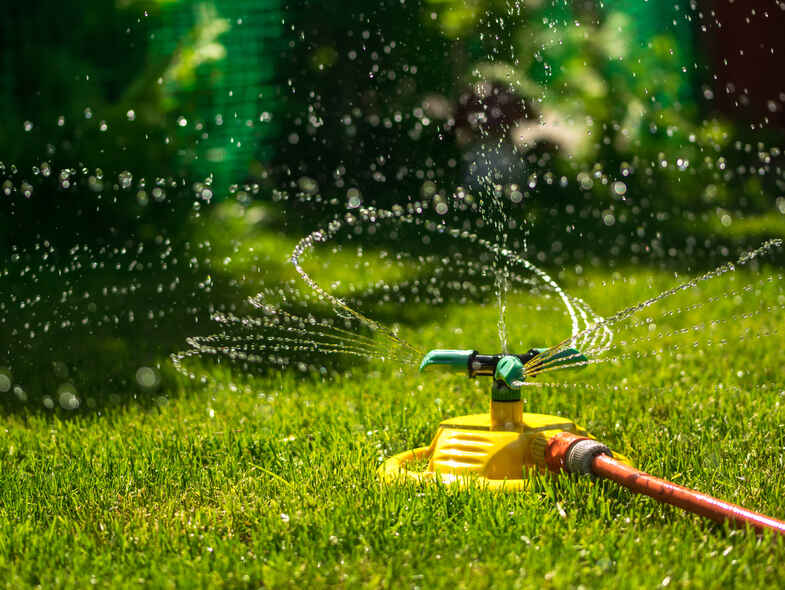Spring is around the corner which means warmer, longer days and plants and flowers in full bloom. So, with only a few weeks of winter left, now is the perfect time to jump into the garden and get it ready in time for the new season. Whether you want to establish a new flower bed, give your existing garden a tidy up, or simply tend to your lawn — whatever your situation, the sooner you start, the better the result when spring arrives.
Here’s our guide to help you get a head start in the garden before springtime.
Spring clean
A great way to begin your garden preparation is with a spring clean — just like having a clean canvas to work with. Start by removing weeds, leaves and debris from lawns and garden beds, and pull up old, dead or dying flowers and plants. Most plants can be pulled out of beds manually — it’s a good time to do so when the soil is still soft from winter — then add fresh mulch to keep soil quality and moisture levels high. For plants that may have overgrown over winter, give them a prune to allow for fresh growth.
Tools
Head to your garden shed and give your tools a thorough clean, removing old soil or debris, and sharpen them if required. Check if any tools need to be repaired or replaced by looking at handles and hinges, testing everything out to ensure it works as it should, including electrical and motor tools like drills and lawnmowers. Head to your local hardware store for replacements or repairs — this will help to avoid last-minute stress when you actually need to use them.
Pest control
During your spring clean, take the time to inspect your garden for pests. All of your hard work preparing your yard for spring will go to waste if you don’t address pests early on, especially if you are planning to sew new seeds and plants. Check beds, pots, stems and leaves and go through your soil for slugs, snails, aphids and larvae. If you’ve spotted some insects and you’re unsure of what they are (and what damage they could do), take photos and ask your local nursery specialist or take to the internet and do some research online. You may find that all you need is some insect spray to keep the nasties at bay.
New plants
The last few weeks before spring is an ideal time to buy new plants and seeds best suited for the spring season, like bare-root trees and shrubs. Before planting, take the time to plan where your new plants will go, considering how much room they need to grow, and how much water and sunlight they require. Aerate your soil and add some compost, and be sure to fertilise around tree, bush and plant roots.
Lawn care
When it comes to your lawns, check for signs of water-logging that may have occurred after heavy rains throughout winter. If required, aerate your lawn with a fork or a spike or plug aerator to allow excess water to soak into the soil. Winter is a good time to use a liquid fertiliser on your lawn while growth is generally slow, but once spring settles in, use a granular fertiliser to boost lawn growth, keeping it luscious and healthy in the warmer months.
Water
It’s important to give your lawns, flowers and plants the correct levels of water needed to survive and thrive throughout the spring. Each plant has unique water needs, so consider grouping like-for-like plants together in beds. Depending on the size of your garden, installing a watering system with a timer can help manage different areas and watering requirements across your yard. If you have a watering system installed, now is a good time to test it out to see if it is giving your plants enough water flow. Also, don’t forget to check for any holes or leaks at the tap or along the water lines.
Beds, fences and gates
Preparing your garden for spring isn’t just about the lawn, soil and plants, but the garden bed walls, fences, pots and gates that protect them. Check for cracks, leaks, loose bolts and hinges, and look for anything unstable or leaning to one side. Early repairs when beds are clean and empty means less mess and damage when your garden is in bloom.
Compost
If you have a compost area in your garden, late winter is a good time to give it a clean up if you haven’t touched it over the colder months. Compost works best when it is aerated, so turn it with a garden fork each month. If you don’t have a compost pile, then why not establish one before spring? It’s an environmentally friendly way to rid yourself of organic waste which can then be used as compost in your garden to enrich soil and prolong plant life. You can make your own compost pile in the garden or buy a ready-made compost bin from your local nursery or hardware store.
For all of your property needs, contact your local Peter Blackshaw office





